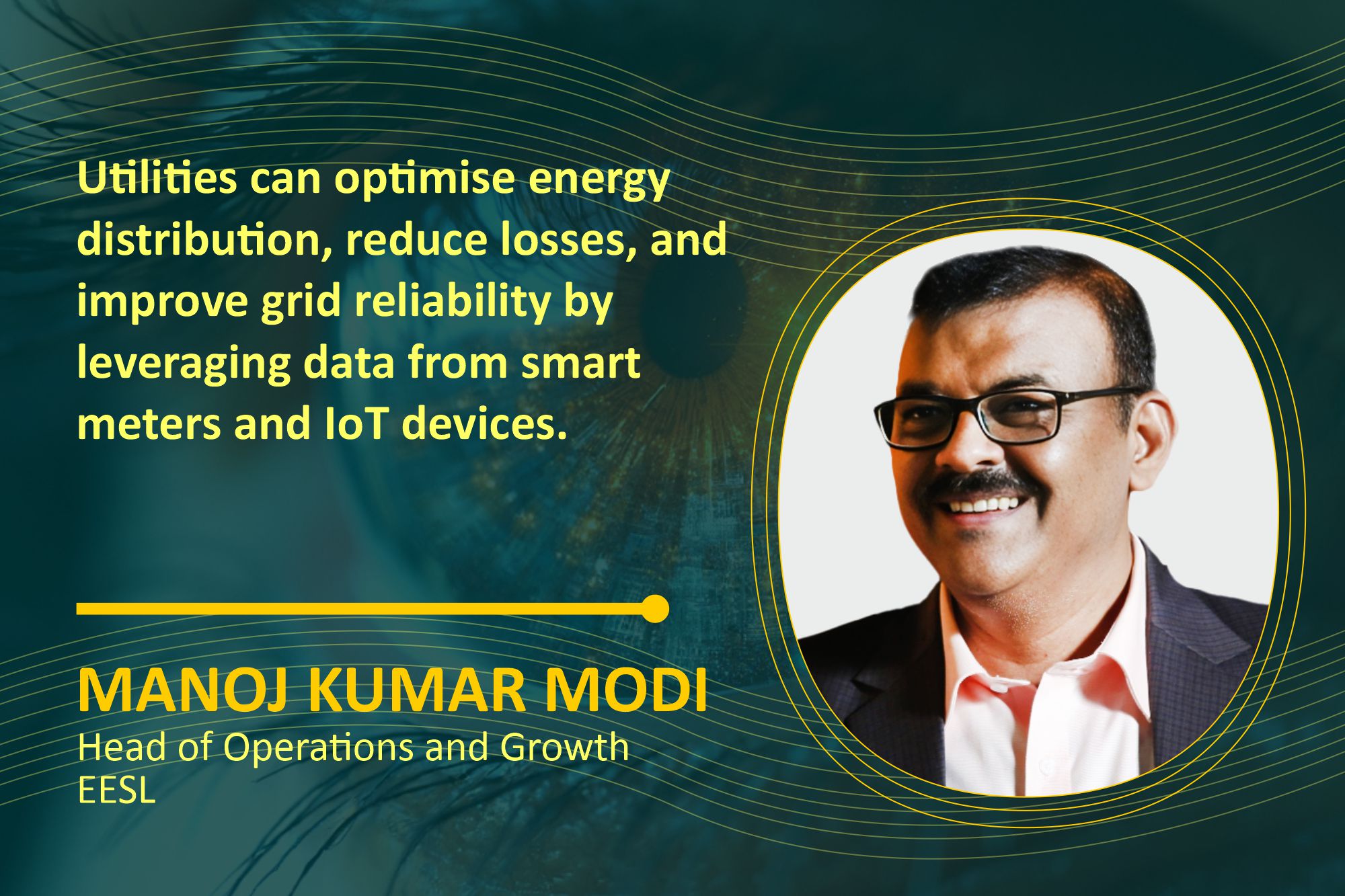EESL employs advanced technologies to enhance RE grid integration
By EPR Magazine Editorial December 23, 2024 7:44 pm IST
By EPR Magazine Editorial December 23, 2024 7:44 pm IST

Considering Wi-SUN technologies, they may be in a nascent stage. To better understand this technology, it needs to mature for implementation in smart meter systems. Wi-SUN’s mesh network architecture ensures robust connectivity, high uptime, and low latency, making it adaptable to urban challenges.
Smart meters play a crucial role in the functioning of smart grids by collecting real-time energy consumption data. They interact with Advanced Metering Infrastructure (AMI) to transmit this data to utility operators, enabling better demand forecasting and grid management. By integrating with energy storage systems, smart meters help optimise energy use, storing excess power during low demand and discharging it during peak times. This coordination reduces grid congestion, improves energy efficiency, and enhances reliability across the network. Manoj Kumar Modi, Head of Operations and Growth from EESL, shares insights with EPR.
How is EESL enhancing real-time energy monitoring to meet the growing demand for efficient energy management?
EESL is enhancing real-time energy monitoring to meet the growing demand for efficient energy management in smart cities. A key component of this strategy is the Smart Meter National Program. EESL with its JV Intellismart, is implementing a smart metering programme to improve distribution companies’ billing and collection efficiencies significantly. EESL has cemented MoUs and agreements for smart meters with states including Andhra Pradesh, Uttar Pradesh, Haryana, Bihar, NDMC-Delhi, and Telangana. EESL has successfully installed over 40 lakh smart meters in Uttar Pradesh, Delhi, Haryana, Bihar, Rajasthan, and Andaman under this groundbreaking programme.
Moreover, EESL is leveraging cutting-edge technologies to optimise energy distribution and predict consumption patterns. These advancements allow for better integrating renewable energy sources into the grid, enhancing overall operational efficiency. Using real-time data analysis and predictive maintenance, EESL ensures a reliable power supply while promoting sustainability.
What are the key challenges and opportunities associated with deploying Smart Meters in India?
The deployment of smart meters in India presents challenges and opportunities, particularly regarding interoperability, cybersecurity, and integrating IoT devices into the grid. A key challenge is interoperability, as the lack of standardised protocols can lead to compatibility issues among various hardware and software from different vendors, increasing costs and implementation delays. Additionally, the rapid evolution of technology raises concerns about the potential obsolescence of deployed systems.
Cybersecurity is another critical challenge, as smart meters are vulnerable to cyber threats that could compromise sensitive consumer data and disrupt services. Ensuring robust cybersecurity measures is essential for maintaining consumer trust and protecting infrastructure. On the opportunity side, integrating IoT devices into the grid can significantly enhance operational efficiency. Utilities can optimise energy distribution, reduce losses, and improve grid reliability by leveraging data from smart meters and IoT devices. Addressing these challenges through collaboration among stakeholders and investment in infrastructure will be vital for unlocking the full potential of smart metering in India.How can RFEH and Wi-SUN technologies improve smart metering systems in urban India?
RF Technology is a proven technology in the smart meter system. However, advancements in RF technology used with energy harvesting phenomena may benefit smart metering systems. The RFEH technologies may not directly benefit the smart meter since it is a measuring device for energy consumption connected to a power source. However, technologies bundled with network devices used to develop the AMI Infra may result in advancement to smart metering systems. The RFEH enables self-sustaining meters that eliminate battery dependence, facilitating large-scale deployment. The Wi-SUN technologies may be in the nascent stage, and for better understanding, this technology needs to mature for implementation in smart meter systems. Wi-SUN’s mesh network architecture ensures robust connectivity, high uptime, and low latency, making it adaptable to urban challenges.
Together, they may create a resilient infrastructure essential for efficient energy monitoring and resource allocation in rapidly growing urban areas.
We use cookies to personalize your experience. By continuing to visit this website you agree to our Terms & Conditions, Privacy Policy and Cookie Policy.